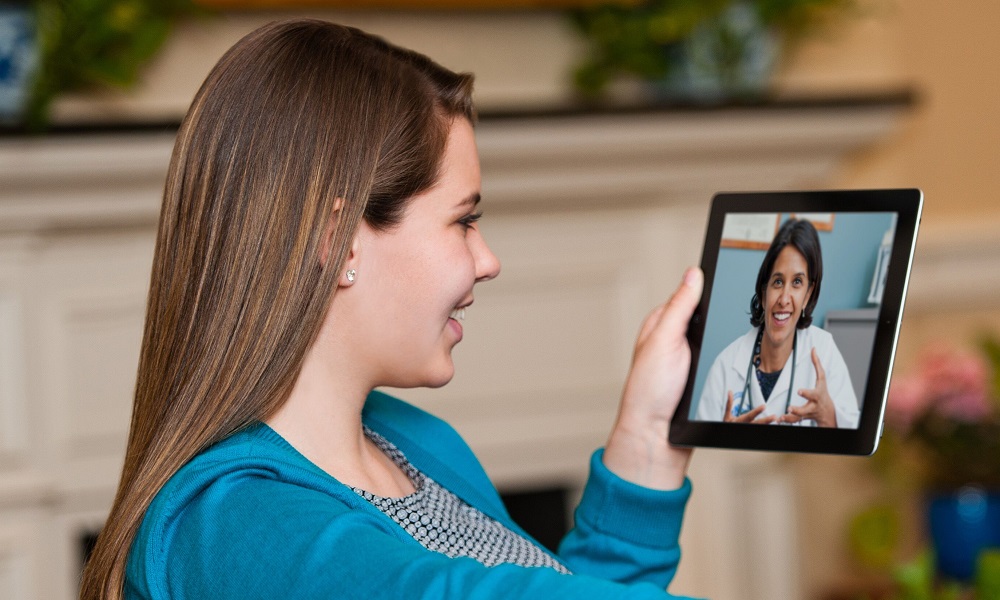Two new articles provide insights on the use of telehealth or virtual care in the age of COVID-19 and beyond, pointing to its value to not only prevent contagious diseases but also to provide access to effective and equitable care.
In a Nature Partner Journal’s Digital Medicine perspective, Lee H. Schwamm, MD, Director of the Center for TeleHealth at Massachusetts General Hospital and Vice President of Virtual Care at Partners Healthcare, and his colleagues stress that virtual care, by collapsing the barriers of time and distance, is ideal for providing care that is patient-centered, lower cost, more convenient and with greater productivity than traditional methods for delivering care, especially during a pandemic.
It will be important for health systems to reap the benefits of this digital innovation to redesign inpatient and ambulatory care delivery now and in the near future, as we transition from clinical surge to a recovery phase.
Lee H. Schwamm, MD
Director, Center for TeleHealth; Vice President of Virtual Care, Partners Healthcare
The article describes the scope and scale of the virtual care innovation introduced at Partners Healthcare and provides guidance to other health care systems on implementing virtual care tools and addressing challenges to their use during and after the COVID-19 pandemic.
“It will be important for health systems to reap the benefits of this digital innovation to redesign inpatient and ambulatory care delivery now and in the near future, as we transition from clinical surge to a recovery phase,” said Dr. Schwamm.
In Lancet Digital Health, Dr. Schwamm and co-authors describe in greater depth two pivotal innovations in virtual care delivery for hospitalized patients: virtual rounds and a virtual intercom communication system.
Virtual rounds seek to redesign traditional medical rounds, where large numbers of health care workers are frequently huddled together around a computer screen or test result to discuss treatment options. With virtual rounds as a means of so-called medical distancing, one or two health care workers are physically present on a hospital ward, while all other multidisciplinary team members join remotely from home or other locations in the hospital.
The virtual intercom communication system allows clinicians to monitor and communicate with patients over video screens from anywhere in the hospital and present a human face to isolated patients whose only other personal contact is typically with providers who are fully gowned, masked and gloved.
“These approaches have allowed us to deliver exceptional care during a time of mass contagion, while preserving personal protective equipment in short supply, reducing exposure time of staff and engaging in compassionate and reassuring encounters over video sessions whenever care is required,” said Dr. Schwamm.
Dr. Schwamm noted that the current health crisis may serve to transform outdated methods of health care delivery and reveal new ways to use virtual care to improve the health of all patients.
Papers Cited:
Schwamm LH, Erskine A, Licurse A. A digital embrace to blunt the curve of COVID19 pandemic. NPJ Digit Med. 2020;3:64. Published 2020 May 4. doi:10.1038/s41746-020-0279-6
Schwamm LH, Estrada J, Erskine A, Licurse A. Virtual care: new models of caring for our patients and workforce [published online ahead of print, 2020 May 6]. Lancet Digit Health. 2020;10.1016/S2589-7500(20)30104-7. doi:10.1016/S2589-7500(20)30104-7
About the Massachusetts General Hospital
Massachusetts General Hospital, founded in 1811, is the original and largest teaching hospital of Harvard Medical School. The Mass General Research Institute conducts the largest hospital-based research program in the nation, with annual research operations of more than $1 billion and comprises more than 9,500 researchers working across more than 30 institutes, centers and departments. In August 2019, Mass General was named #2 in the U.S. News & World Report list of "America’s Best Hospitals."

